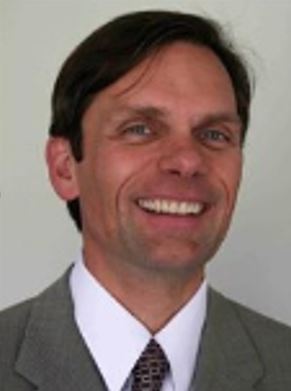
Applications of Atomic Layer Deposition (ALD) and Atomic Layer Etch (ALE) in Advanced Semiconductor Manufacturing
Curriculum Vitae:Michal Danek is Managing Director of Technology in Deposition Product Group at Lam Research Corporation. He has led process development in the area of metallization for advanced semiconductor applications including atomic layer deposition and atomic layer clean methods. His current work is focused on application of machine learning, data analytics and computational modeling tools in new product development and process optimization and control. Michal holds a Ph.D. degree in inorganic chemistry from the Massachusetts Institute of Technology, and M.S. and B.S. degrees in chemistry from the Charles University in Prague.
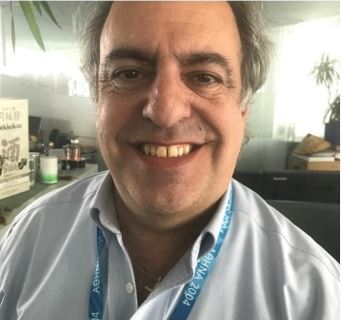
The path to Roll to Roll Imprint Technology, an Enabling Technology
Curriculum Vitae:John Maltabes is an R&D engineer at Applied Materials Corporation in Alzenau Germany, working on roll to roll flexible electronics. He was part of the research team at HP Labs in Palo Alto, California working on manufacturability issues for roll to roll flexible backplanes. Prior to HP Labs, Mr. Maltabes was part of a successful team responsible for commercializing imprint lithography at Molecular Imprints in Austin, Texas. A recognized pioneering expert in lithography, Mr. Maltabes has worked on every major lithography technology developed over the last 30 years. He has 16 granted US patents and author of over 30 technical publications. Mr. Maltabes is an alumni of the Rochester Institute of Technology where he studied Imaging Science and Microelectronic Engineering.
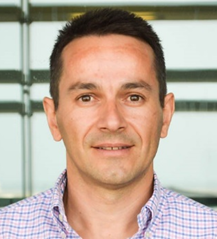
Flexible nano-electronics via large-area manufacturing paradigms
Curriculum Vitae:Thomas D. Anthopoulos is a Professor of Material Science and Engineering at King Abdullah University of Science and Technology (KAUST) in Saudi Arabia, where he has been since January 2017. He received his B.Eng. and D.Phil. degrees from Staffordshire University in UK. He then spent two years at the University of St. Andrews (UK) where he worked on new materials for application in organic light-emitting diodes before join Philips Research Laboratories in The Netherlands to focus on organic transistors and printed microelectronics. From 2006 to 2017 he held faculty positions at Imperial College London (UK), first as an EPSRC Advanced Fellow and later as a Reader and Professor of Experimental Physics. His research interests are diverse and cover the development and application of novel processing paradigms and the physics, chemistry & application of functional materials.
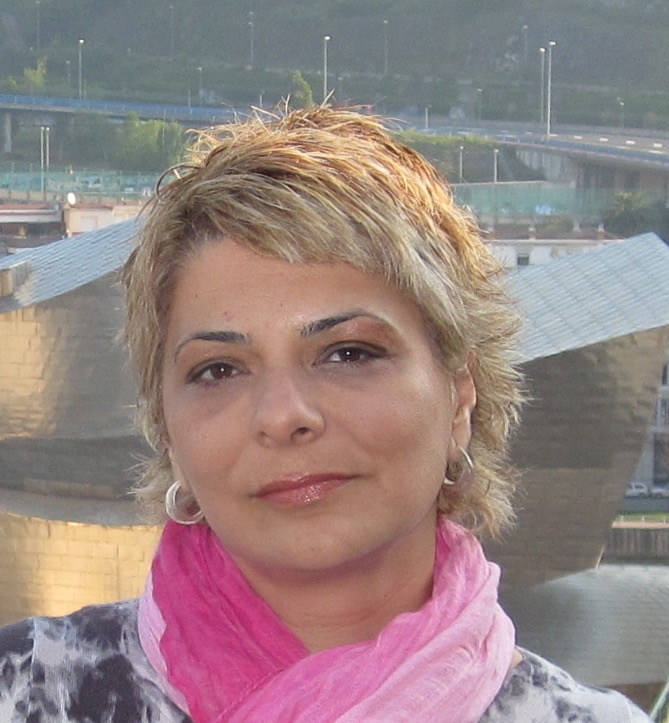
Laser-based 3D printing at the nanoscale
Curriculum Vitae:
Dr. Maria Farsari is Director of Research at IESL-FORTH, where she joined in 2003. Her main research interests are multi-photon lithography, laser-based fabrication of 2D and 3D micro and nano structures, and materials processing using ultrafast lasers. She is the author of 80 peer-reviewed publications, and she has given more than 50 invited talks at international conferences.
Dr. Farsari received her undergraduate degree in 1992 from the Physics Department, University of Crete and her PhD in 1997 from the Physics Department, University of Durham, UK, where she was a Marie Curie fellow during the period 1992-1994. The subject of her PhD was organic nonlinear optics. After graduating, she worked as a postdoctoral research fellow at the Universities of Durham and Sussex and as a Senior Optical Scientist for the security company DeLaRue Holographics. She was a founding member of the Dublin company Xsil Ltd.
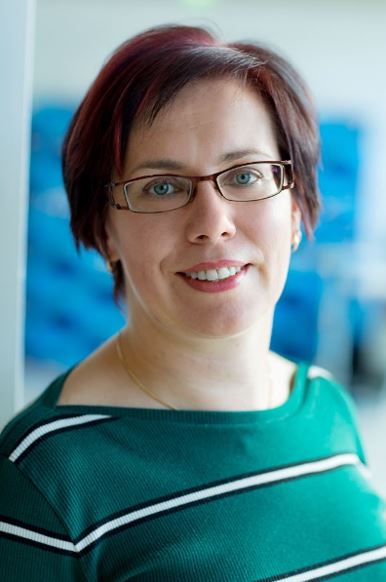
Patterned Structures and Nanolaminate Hybrid Architectures from Plant-sourced Nanocellulose for Optoelectronics
Curriculum Vitae:Tekla Tammelin is a Research Professor in Biomaterials Engineering and Design at VTT, and Docent in Bioproduct Technology at Aalto University. She is a VTT leader of the Academy of Finland funded joint competence center for the materials bioeconomy between Aalto University and VTT (www.finnceres.fi). Her research strategy exploits the inherent features of cell-wall systems and its components, and the biomaterials concepts draw the inspiration from plant-based material assemblies and functions. Her scientific aim is to bridge the gap between molecular and macroscopic behaviour of complex plant-derived materials and further provide new aspects on strategies to construct competitive and viable biomaterial structures and solutions. These concepts include responsive nanoenhanced membrane materials, gas/vapour barrier and gas capturing materials, versatile immobilisation templates for energy producing biomolecules, printed electronics and nanopatterned optical structures. She is a main inventor of the recent patent related to the larger scale preparation method for nanocellulosic films. She has published 60 peer-reviewed papers and more than 100 scientific meeting proceedings. She received Akzo Nobel Nordic Research Prize in 2010 in the area of surface chemistry of cellulosic fibres and in 2016 she received the VTT Award on Exceptional Scientific Excellence.
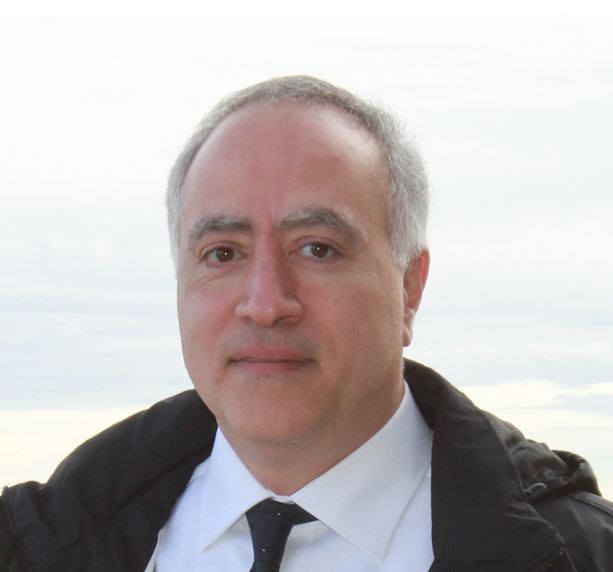
What can and cannot be done with Superhydrophobic, or Omniphobic surfaces?
Curriculum Vitae:Alidad Amirfazli is a Professor at the York University in Toronto, Canada, where he founded the Department of Mechanical Engineering in 2013. He formerly held the Canada Research Chair in Surface Engineering at the University of Alberta, Canada. Amirfazli has produced exciting results in wetting behavior of surfaces, drop adhesion and shedding, drop impact, icing, direct laser patterning of self- assembled monolayers and super-hydrophobic surfaces. He has had more than 250 scientific contributions, many in prestigious peer reviewed journals; he has also given many invited talks at international level. He is the Editor for the Advances in Colloid and Interface Science, Associate Editor for Interfacial Phenomena & Heat Transfer, and an Editorial board member for other journals. Dr. Amirfazli has been the recipient of the Martha Cook Piper Research prize, Petro-Canada Young Innovator Award, and Killam Annual Professorship. He is a Fellow of the Engineering Institute in Canada, and CSME. In 2014 he was inducted into the Royal Society of Canada’s College of New Scholars, Artists and Scientists. He also served in the board of Professional Engineers of Alberta, and has been a consultant with various companies in USA, Europe, and Canada.
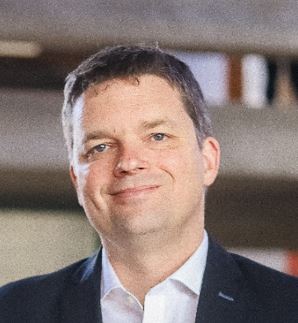
Merging Computing and Sensing for Low power and Sustainable Edge Applications
Curriculum Vitae:Thomas Ernst is chief scientist and VP research at CEA LETI with responsibility for long term research strategy and partnerships. He received his Electronics Engineering degree, Ph.D. and accreditation for PhD supervision from National Polytechnics Institute of Grenoble (France) in the field of electronics and microelectronics. From 1997 to 2000, he developed advanced SOI CMOS characterisation, physical modelling and circuit-level performance evaluation with STMicroelectronics and CNRS. He then joined CEA-LETI were he led different research projects with industry including SOITEC, STMicroelectronics, IBM, Freescale, NXP, and also a start-up on gas sensing (APIX). He led the team developing the first CMOS 3D-stacked nanowires. Dr. Ernst is author or co-author of over 180 technical journal papers and communications at international conferences. He is author or co-author of 20 patents. He is or was a member of committees of VLSI technology symposium, IEDM, ESSDERC, ULIS, ICICDT conferences, IEEE EDS France. He is a member of the Editorial Board of Microelectronic Engineering journal. He was recipient of a research grant from the European Research Council (ERC) to develop multi-physics integrated smart systems for sensing applications, in collaboration with CALTECH.
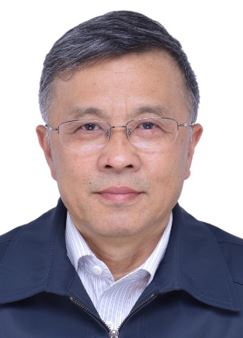
Printed flexible electronics for wearable applications
Curriculum Vitae:Professor Zheng Cui had his PhD in 1988 and worked in the UK from 1989 until 2009, first at Cambridge University and then at Rutherford Appleton Laboratory as a Principal scientist and group leader. In 2009, he joined the Suzhou Institute of Nanotech, Chinese Academy of Sciences, where he setup the Printable Electronics Research Center (PERC) which was then the first in China. The research themes conducted at PERC in the last 10 years range from electronic ink formulation to printing process development and applications, including printed solar cells, printed thin-film transistors, printed organic/quantum dots light emission, and printed flexible/stretchable/wearable electronics. He has published over 250 technical papers, 8 books and over 60 patents. A novel technology for making flexible metal-mesh transparent conductive film he and his team developed has been implemented in mass production and become a successful commercial product for touch panels.
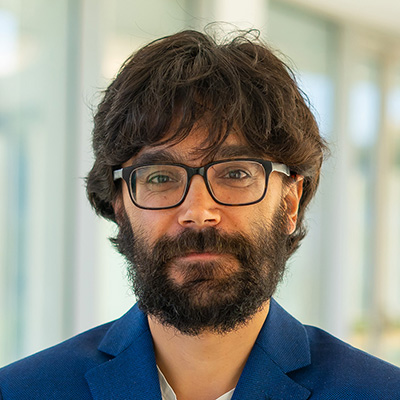
Biomimetics of photosynthetic photonic structures. How natural light harvesting could become an inspiration for nanotechnology
Curriculum Vitae:Dr. Martin Lopez-Garcia is since 2018 head of the Natural and Artificial Photonic Structures Group at the International Iberian Nanotechnology Laboratory in Braga, Portugal. His research focuses on bioinspired strategies to manipulate light at micro and nano-scale. He is especially interested in the interplay between photonic structures and photosynthesis as a new strategy towards green energy production. His past and current work combines the understanding of the biophysics of photosynthetic photonic systems and the development of nanofabrication technologies for the biomimetics of such systems.
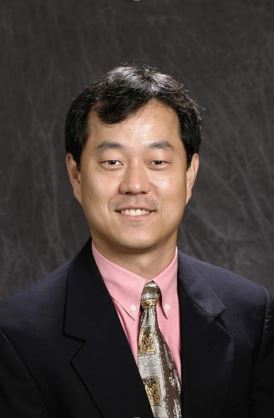
Design and Fabrication of Plastic Nanofluidic Devices for Single Molecule Detection
Curriculum Vitae:Dr. Park received his PhD in Physics in 2002 at Technical University Chemnitz, Germany and then spent 2 years at the Laboratory for Micro- and Nanotechnology at Paul Scherrer Institute in Switzerland. He holds a position as Professor in Mechanical Engineering in Louisiana State University since 2005. His research focus is nanomolding technology (or nanoimprint lithography) for biomedical nanofluidic applications. He published more than 75 papers in peer reviewed journals and 40 publications in conference proceedings. Dr. Park received over $13.78 million grants from various funding sources. He is a recipient of NSF CAREER award in 2007 and a co-PI of NIH P41 Biotechnology Resource Center for BioModular Multi-Scale System for Precision Medicine (CBM2). He is also a co-founder of a start-up company, Digital NanoGenetics.
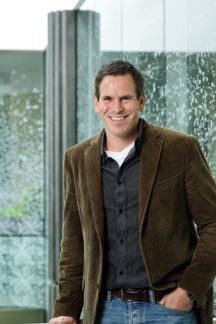
Nanomedicine with Silicon Nanostructures
Curriculum Vitae:
After completing his BSc at the University of Saarland (1993) and his MSc at the RWTH Aachen (1995) in Germany, Nico completed a PhD thesis (1999) in polymer surface chemistry at the DWI Leibniz Institute for Interactive Materials under Professor Hartwig Höcker. He received postdoctoral fellowships to work in the area of bioorganic chemistry under Professor Reza Ghadiri at the Scripps Research Institute in La Jolla, California. In 2001, he became a Lecturer at Flinders University in Australia, an Associate Professor in 2006 and a full Professor in 2008. From 2008-2011, he was the Associate Head of the Faculty of Science and Engineering at Flinders University. Since 2012, he is a Professor in Chemistry and Materials Science at the Mawson Institute of the University of South Australia. From 2013-2015, he was Deputy Director of the Mawson Institute at the University of South Australia and Program Leader of the Cooperate Research Centre for Cell Therapy Manufacturing. From 2014-2017, he was Node Leader in the Australian Research Council Centre of Excellence in Convergent Bio-Nano Science & Technology. Since February 2017, he is the Scientific Director of the Melbourne Centre for Nanofabrication, Professor at the Monash Institute of Pharmaceutical Sciences at Monash University and Science Leader at the Commonwealth Scientific and Industrial Research Organisation (CSIRO).
The core research activity in his laboratory is the study of silicon-based nanostructures and their surface chemistry. Following from this more fundamental research, his focus is on the application of silicon-based nanostructured materials in biosensors, biochips, drug delivery and regenerative medicine.
He has authored over 380 peer-reviewed journal articles with over 10,000 citations, h-index 52, and has filed over 25 patents. He has received fellowships from the German Research Foundation (DFG), the CSIRO, the Alexander von Humboldt Foundation, is a recipient of the Tall Poppy Science Award, a finalist for the South Australian Scientist of the Year 2015 and the Australian Innovation Challenge. And he has served on the College of Experts of the Australian Research Council.
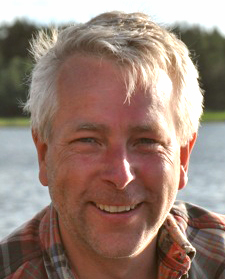
Acoustofluidics - A sound approach to liquid biopsies
Curriculum Vitae:Thomas Laurell received his PhD in electrical engineering in 1995 at Lund University and obtained a position as associate professor in 1998 at Lund University. He holds a position as Professor in Medical and Chemical Microsensors since 2000 with a focus on Lab-On-A-Chip technologies in biomedicine at the Dept. of Biomedical Engineering. In 2005, Laurell co-founded the Chemical and Biological Microsystems Society, CBMS, the ruling body of the MicroTAS conference series and has served as President since 2009. He has also cofounded the Centre of Excellence in Biological and Medical Mass Spectrometry, a national infrastructure node at Lund University. In 2009, Laurell was appointed Distinguished Professor at Dongguk University, Dept. Biomedical Engineering, Seoul, Korea and he is an elected Fellow of School of Engineering, Tokyo University since 2015. Laurell is also an elected member of: The Royal Swedish Academy of Sciences, The Royal Academy of Engineering Sciences, and The Royal Physiographic Society. He has served as the Chairman for division VII, Royal Academy of Engineering Sciences 2009-2014. Laurell has published over 200 peer reviewed scientific publications, filed 31 patent applications, (h-index: 44–ISI Web of Science) and has co-founded 4 start-up companies. Total research funding ≈260 MSEK. He is currently directing a Knut and Alice Wallenberg Foundation funded project 2013-18 (38 MSEK) on acoustofluidics in medical applications, as well as the Foundation for Strategic Research (SSF) funded biomedical synergy grant 2014-19 (33 MSEK) on acoustofluidic purification of exosomes, microvesicles and bacteria in clinical diagnostic applications.
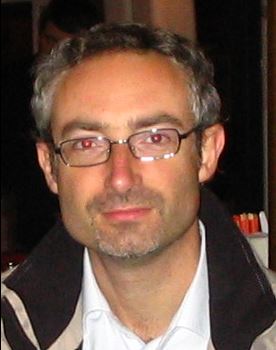
From Cells-on-Chip to Chips-in-Cell: our fantastic “voyage”
Curriculum Vitae:Ph.D. J.A. Plaza was born in Cerdanyola del Vallès (Barcelona), Spain in 1968. He received his Physicist degree and his Ph. D. degree in Electronics Engineering from UAB (1992, 1997). He focused his Ph. thesis on mechanical silicon-based accelerometers at IMB-CNM (CSIC). Since 1995, he has the degree of Specialist in Finite Element Simulation from the UNED, Spain. He did a posdoctoral stay at SINTEF, Oslo (Norway), working on mechanical sensors and bonding techniques between wafers. He returned to the IMB-CNM on 2000 and his research was been focused on the design, simulation, technology development and characterization of Micro- and Nanosystems. Currently, he is the group leader of the Micro- and NanoTools group at IMB-CNM (CSIC). He has participated on 8 consecutive coordinated projects of the spanish -Plan Nacional-, the last 7 as Project Coordinator. He has more than 100 contributions to scientific journals (WOK-JCR indexed) and more than 100 contributions to international conferences on MEMS and NEMS. He has also supervised 8 doctoral thesis. In 2005 his group started a new research line, the posibility to reduce the size of a silicon chips to an amount which could introduce them inside living cells. Thus, they are focused on the development of Suspended Chips (silicon-ba\sed chips smaller than living cells) for Life science applications. So, they managed to prove the concepts of Chip-on-a-Cell and Chip-in-a-Cell. They demonstrated in 2013 the first intracellular silicon chip, a mechanical sensor, which can detect pressure changes inside living cells and transmits the information without any physical contact. In 2015, they demonstrated a suspended planar array chip for molecular multiplexing inside a living cell, which is the technological base of the Array 4 Cells Nanodevices company.
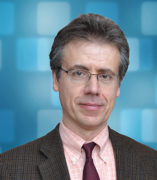
Wettability-Patterned Surfaces for Pumpless Handling of Fluid Microvolumes: Lab-on-Chip and Heat Transfer Applications
Curriculum Vitae:Prof. Constantine Megaridis is a UIC Distinguished Professor at the Department of Mechanical and Industrial Engineering of the Univ. of Illinois at Chicago. His research interests include Droplet and spray technologies; Experimental diagnostics in micro/nanoscale systems; Interfacial phenomena, Liquid repellency, Micro/Nanofluidics; Multifunctional coatings, Multiphase heat and mass transfer.
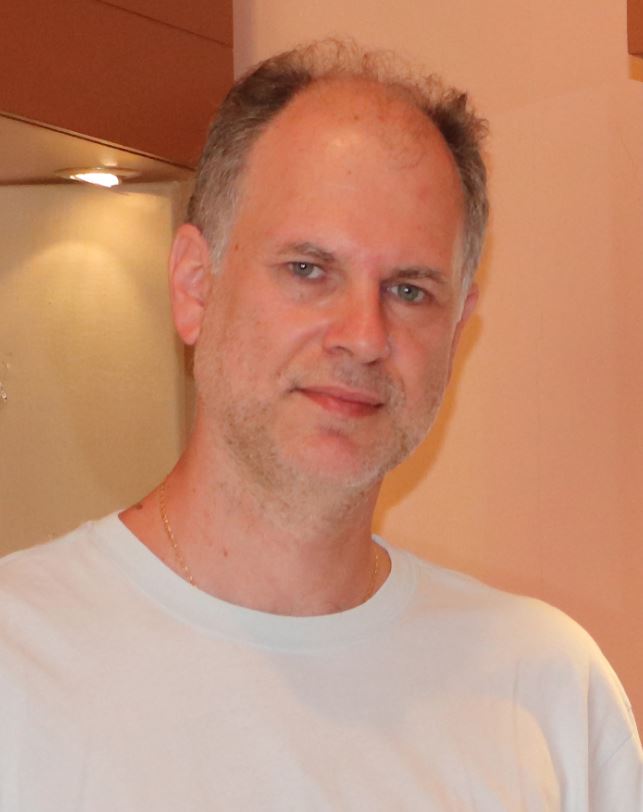
Reconstructing the sound of Homeric singing (Cultural welcome event to be presented at the Knight's palace)
Curriculum Vitae:
Chrēstos Terzēs (born in 1974) holding a Bachelor in Musicology (1996) and a Ph.D. degree in Archaeomusicology (2008), currently provides the MNESIAS project team with archaeomusicololgical research on the augmentation and enrichment of cultural evidence via digital interactive sound restoration of Ancient Greek Musical Instruments (DoIT-NKUA). Training coordinator at HERMES project (DoIT NKUA 2016-18), a research and training project on education for the experimental reconstruction of ancient Greek musical instruments. Member of the DARIAH-GR research team at the Academy of Athens (2013-15) for the development of the National Infrastructure for Digital Research in the Arts and Humanities. Post-PhD researcher at the Department of Music Studies (TMS-NKUA [2010-13), fellow of the State Scholarships Foundation (2010-11). Freelance Lecturer at (TMS-NKUA 2008-10), and at the Department of Philology (UoP 2009-10). Member of The International Society for the Study of Greek and Roman Music and its Cultural Heritage (MOISA) since 2006. Research assistant (2006-08) and Postgraduate fellow at IMS-FoRTH (2003-05).
Main areas of research
Textual Philology, Greek Palaeography, Ancient Greek Science and Music, focusing on the theory (harmonics/acoustics), the instruments (study and reconstruction), the notation (parasemantics / documents of ancient music), and the restoration of ancient Greek speech and song.
Dr Terzes will sing parts of Homer's Iliad accompanied by ancient Greek musical instrument during the welcome reception.
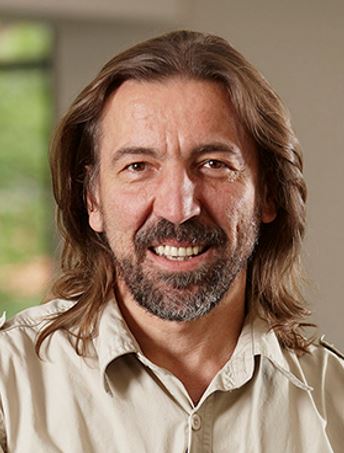
“ - Sky am”: mythologies & methodologies of a nanoartist (to be presented during the conference dinner)
Curriculum Vitae:Dr. Ioannis Michaloudis is a visual artist researcher and academic, internationally acknowledged as a leading practitioner in Art & Science, and the first to research the application of NASA’s nanomaterial silica aerogel in visual arts and design. His career began in Paris, at Sorbonne University, where he presented his thesis in 1998 on the elastic relationships between the visual arts and design. After receiving a Fulbright Award, in 2001 he undertook postdoctoral research on art and technology at Massachusetts Institute of Technology (MIT). He had exhibited his artworks all around the world, he is the author of twelve papers and two book chapters. He has been invited to more than twenty international art and science exhibitions and conferences around the world. Currently he is a Research Affiliate at the Institute of Nanoscience and Nanotechnology at NCSR Demokritos in Athens, Greece an Adjunct Professor at the International Space University in Strasbourg, France, and the Visual Strategist of Aerogel Technologies LLC, in Boston, MA, USA.
September 23rd - 26th, 2019
June 30th, 2019
June 12th, 2019
Up to July 31st, 2019
